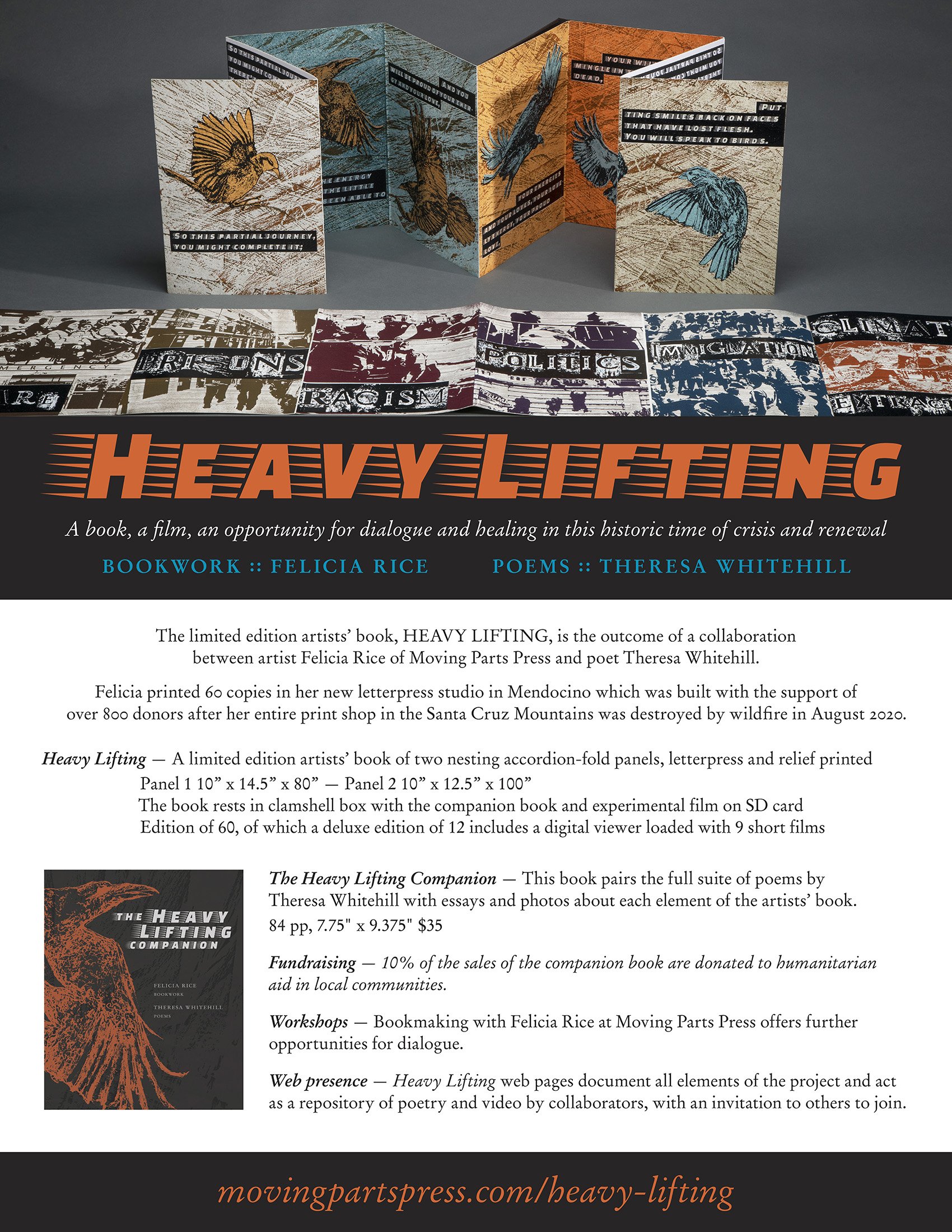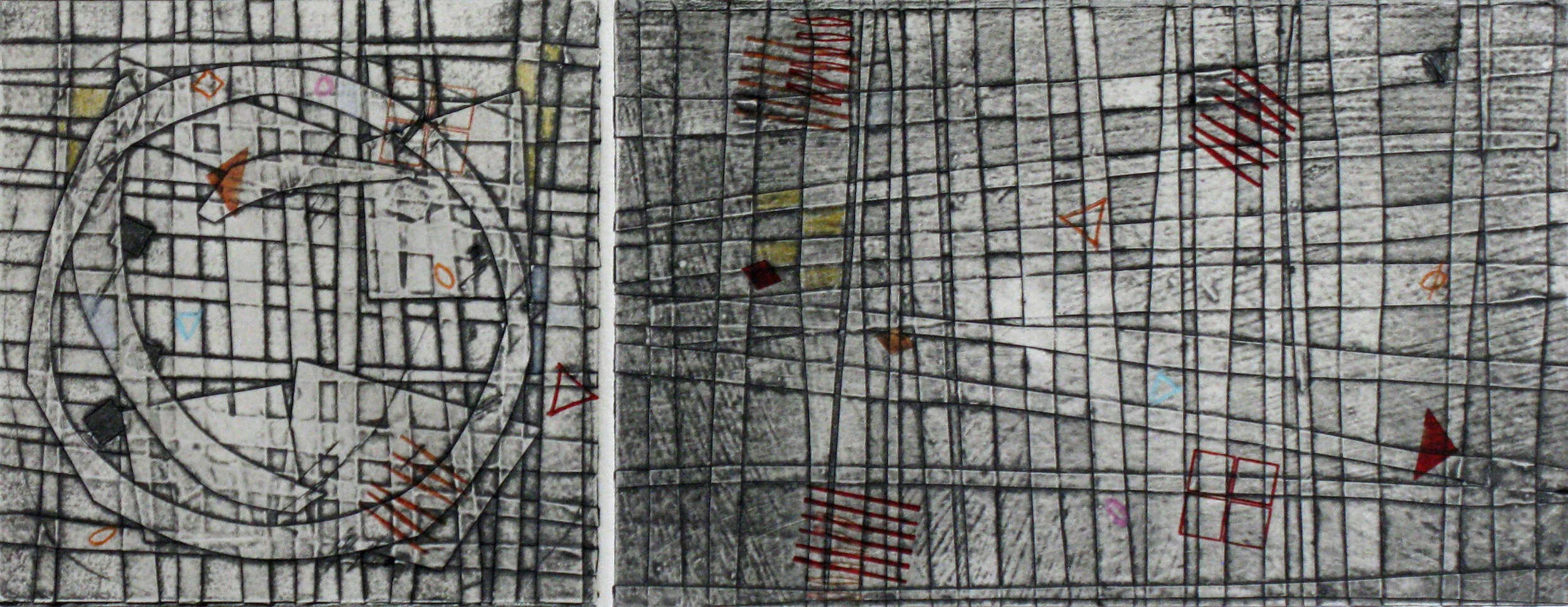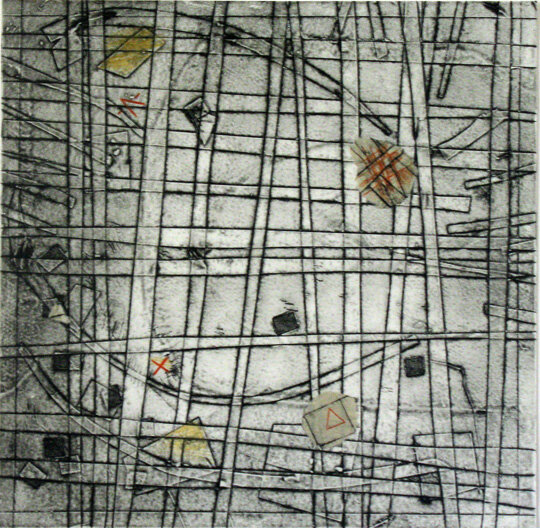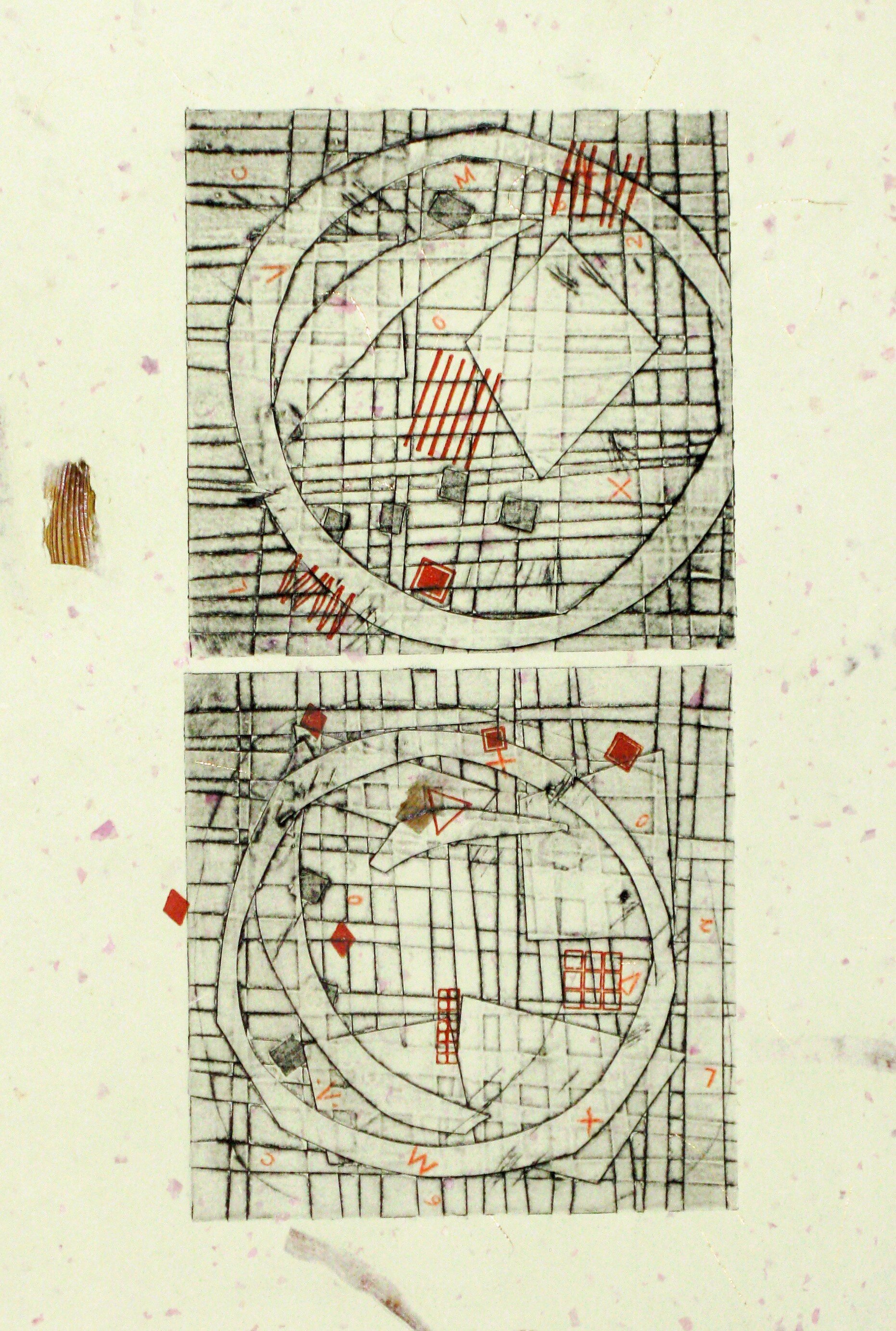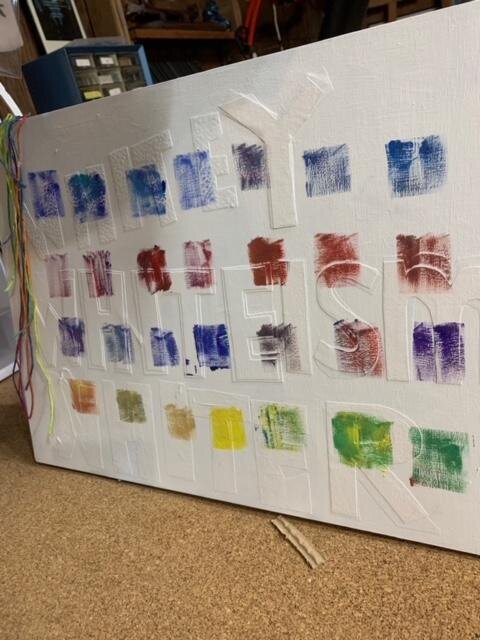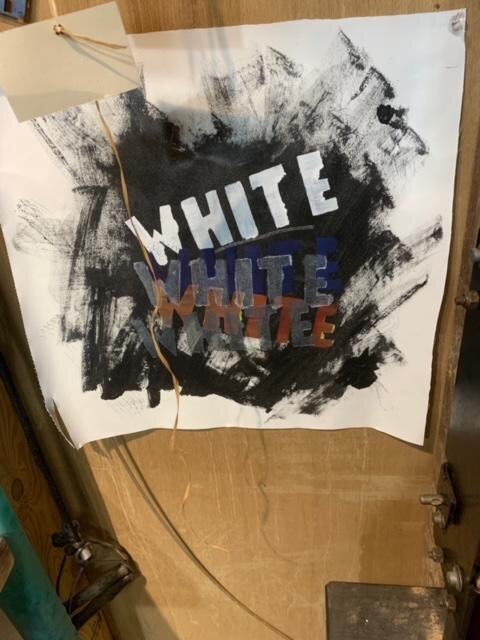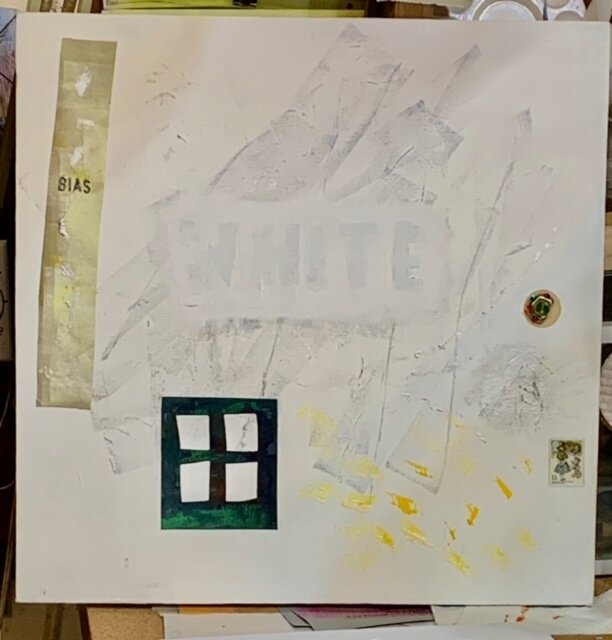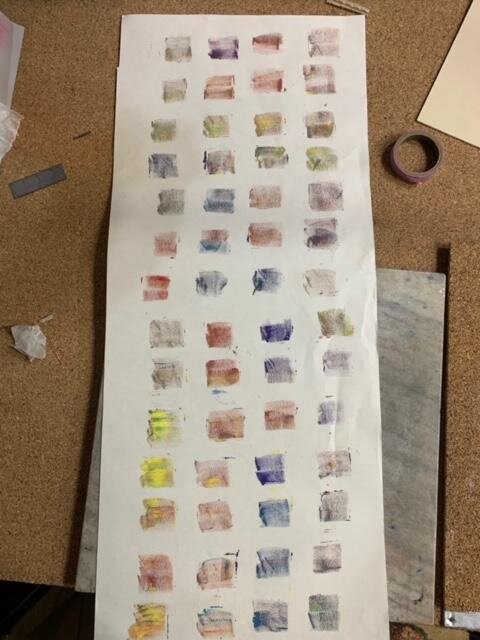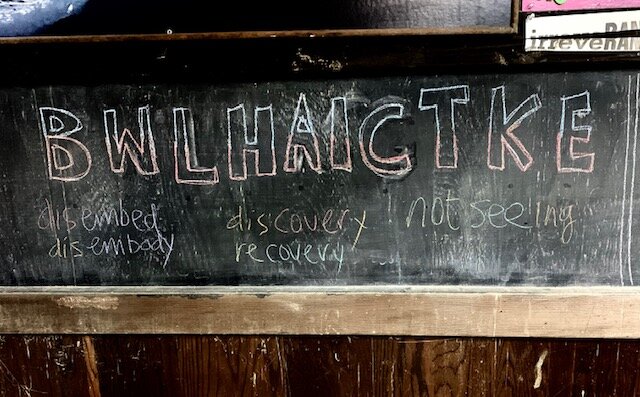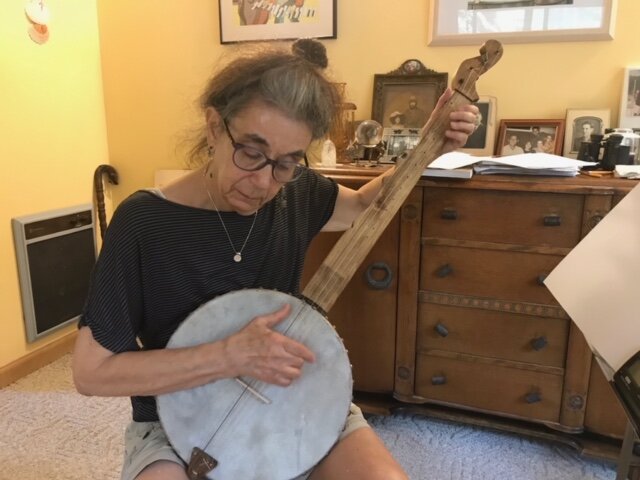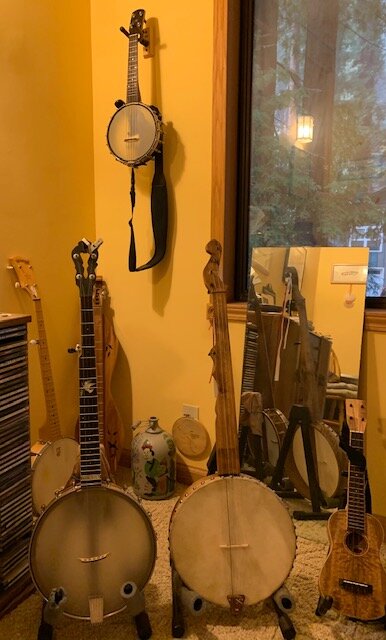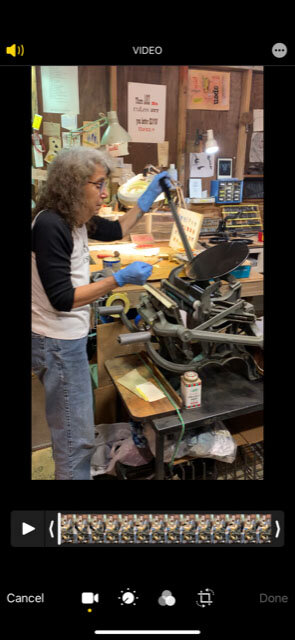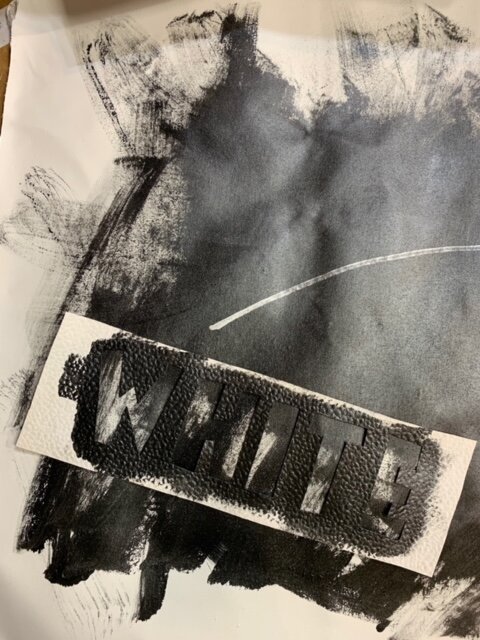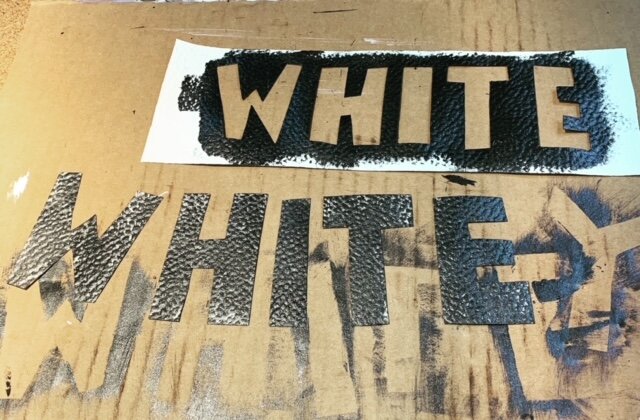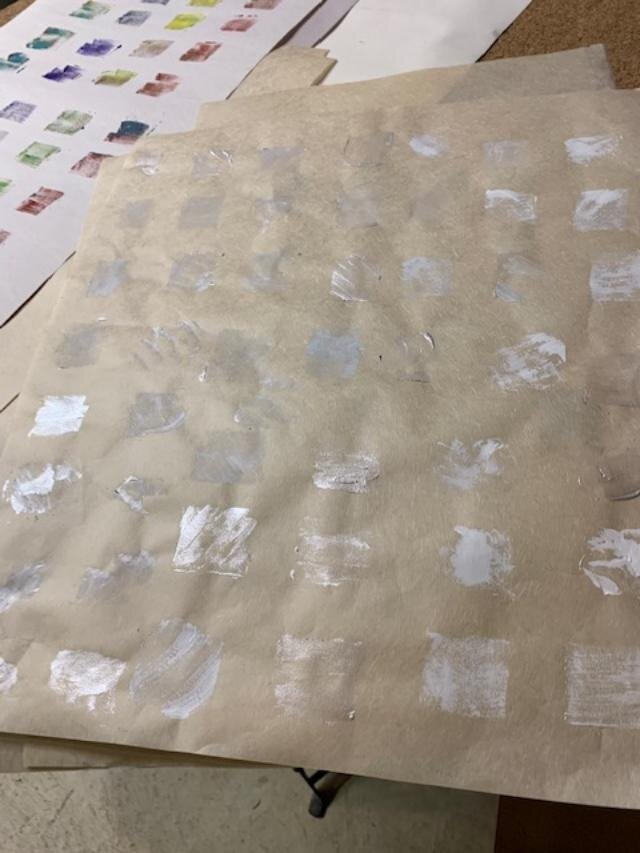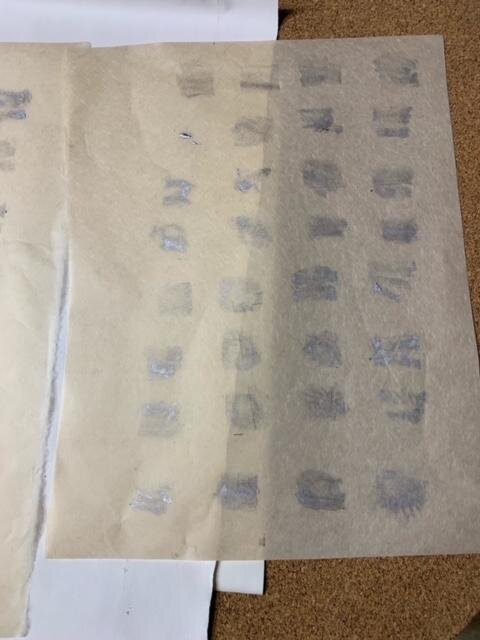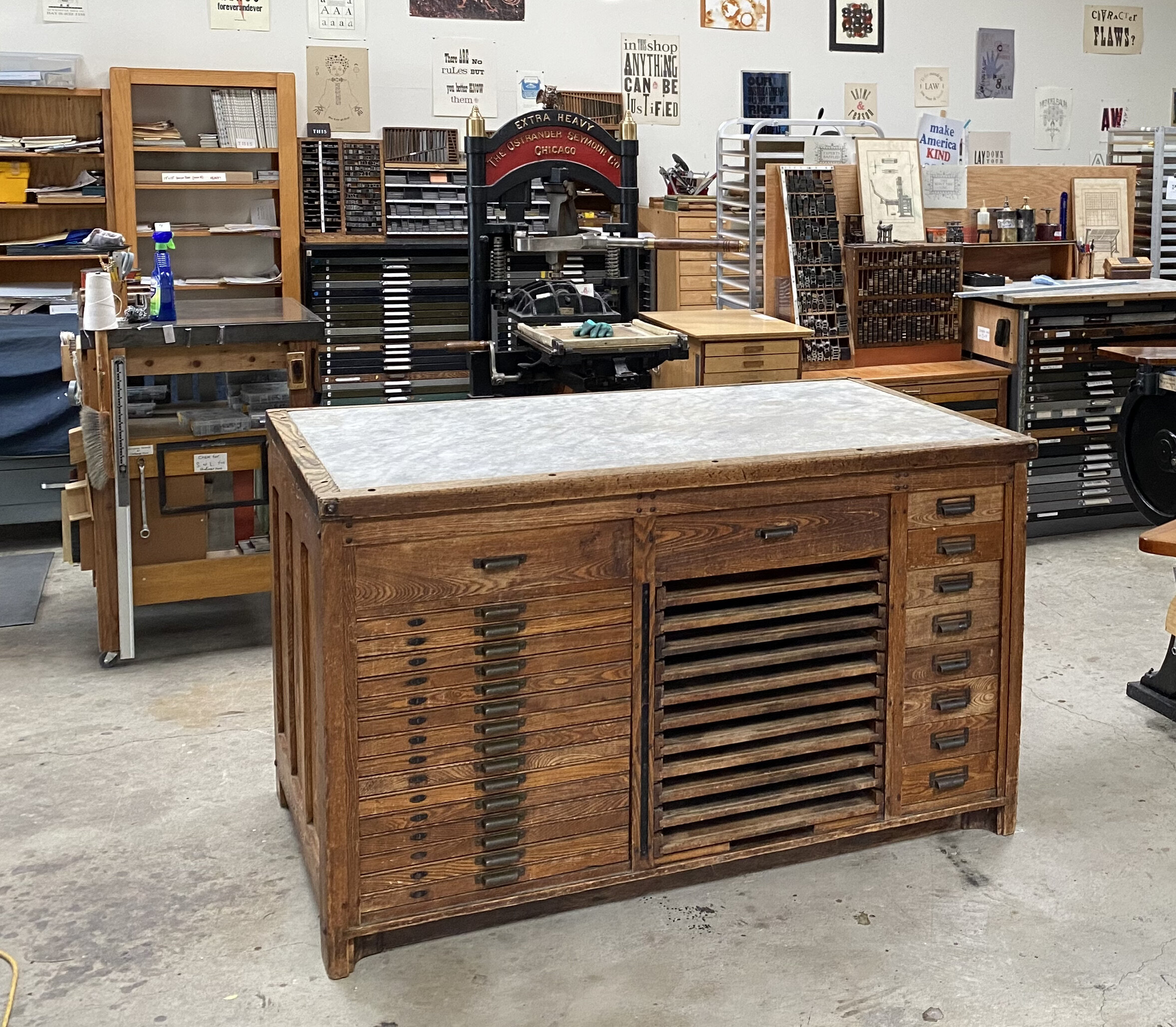Admittedly we have not posted much in this “news” section of the site in quite a while. First of all, pandemic. That was weird and awkward, to say the least. Secondly, a lot of sharing moved to social media platforms, and if you follow us there you’ll see there has been a lot of news over the last few years. Lastly, taking on the leadership role last March as the first and only full time employee, truth be told I am busy. There is a long list with plenty of more pressing issues that take priority over updating this section buried within our site. That said, this news seemed worthy to share and bookmark here on our site.
In 2022 a small group of our Studio Printers took a field trip down to BCC, or Book Club of California, to see their beautiful space in downtown San Francisco. They were founded in 192, so of course have an overwhelming library and reading room, one that has played host to so many guests over the last century. They are one of the two oldest operating book clubs in the United States, and also have a nice collection of beautiful presses on display.
As our group was leaving that visit in awe, the director, Kevin Kosik, graciously offered to feature NBLA in an upcoming quarterly journal. The group returned to the press with a lot of enthusiasm for this amazing opportunity.
So with that, below is a copy of the article we composed as a group, as well some photo’s of the issue.
Change and Continuity in the North Bay
In 1849, French writer Jean-Baptiste Alphonse Karr wrote: plus ça change, plus c'est la même chose, familiarly translated as, “the more things change, the more they stay the same.” The continuity Karr observed need not be a bad thing, as even dramatic changes may entail the preservation of what is valuable in the status quo.
North Bay Letterpress Arts (NBLA), a mainstay of letterpress printing in California’s Sonoma County for fourteen years, is entering a period of exciting transition. The new executive director, Andrew Mecum, is pressing the organization toward the future and actively engaging in what he refers to as “democratizing letterpress.” This involves increasing community access and usage of the studio, especially for younger and more diverse demographics, as a reminder that letterpress, the original social media, remains a powerful and creative way to use language and communication as an art form. At the same time, he will sustain the culture and many of the practices already established, continuing to offer this well-equipped space to people of all skill levels who are interested in exploring or developing their letterpress printing and bookmaking skills.
Understanding how the future Mecum envisions is also la même chose requires some knowledge of the past: The press owes its existence to the vision, dedication, and generosity of Eric Johnson, who in 2009 moved Iota Press from his garage into a small studio space in south Sebastopol. Johnson began printing late in life, thinking of it as an esoteric art that suited his offbeat writing, and was surprised to discover that letterpress was of great interest to others. Over the next few years, several people joined him at the shop in a mutually inspiring cooperative milieu.
Located just an hour’s drive north of San Francisco in the heart of wine country, tucked between thriving outdoor restaurants and beehive gardens, this print shop has become a buzzing public hub offering letterpress workshops and access to the craft of printing for curious students, writers who want to make books, poets creating broadsides, and anyone who simply wants to explore the medium. Johnson’s impassioned aim since the shop’s inception has been to explore the graphic powers of letterpress, especially its ability to fuse poetry and visual art, and to share those resources and skills with all who come seeking them.
In 2014 the press moved to an adjacent area, doubling its footprint to 1600 square feet, and so began a dynamic expansion of the shop’s use, intent, and place in the community. The shop grew to include many old and rare presses and equipment. Currently the shop houses three platen presses, three cylinder presses, one iron hand press, all surrounding two large stone imposing tables as well as many other pieces of equipment. This larger studio space also allowed the type collection and ornamental printing materials to
grow exponentially, so there are now more than 250 cases of metal and wood type, and over a thousand antique engraved cuts, or plates. All of this has been carefully cataloged for easy access and use. Additionally, there is a library with over three hundred books on letterpress, again carefully cataloged, many of which are available for members to take home for use. Some of this paraphernalia was donated or loaned, some bought for a song. Over the years the shop grew in an organic way as people discovered it and joined in on the action. In 2015 Johnson helped incorporate the press as a nonprofit organization called North Bay Letterpress Arts to enable leadership and fundraising efforts that would further the mission of educating and including the community in the enlivening craft of letterpress printing.
An active group of more than a dozen Studio Printers (SP) comprising artists, printers, and writers evolved from an early group of workshop attendees who in 2010 began printing together and enjoyed each other’s company. Calling themselves the Co-op, they shared with Johnson the governance and work of maintaining the studio. In 2017 those most engaged took on the status of Studio Printers, and as years have passed they have continued printing a wide array of innovative broadsides, cards, book arts, and poetry collections. The SP collaborated on a project called PrintPoetry and published twenty issues of a small poetry edition. They also produced an annual anthology of their work called Erratica and a quarterly subscription mailing. Group shows were mounted for the Studio Printers’ work starting with an exhibit and poetry reading at Quicksilver Mine Company (Forestville) in 2012. The Poetry of Printing group show followed in February 2014 at the Risk Press Gallery (Sebastopol); then the group exhibited at Kitty Hawk Gallery (Sebastopol) in 2016. A well-received group exhibit at the local library was mounted in 2020. In 2021 the group produced a collaborative exhibit in the shop to participate in the global environmentally focused exhibits of Extraction: Art on the Edge of the Abyss. Iota Press and North Bay Letterpress Arts have been represented four times at the Codex International Artists Book Exhibition. Such noted printers as Micah Schwaberow have produced prints at NBLA, sometimes in collaboration with Studio Printers, while work produced by printers at the shop has frequently been accepted into juried shows and in multiple years received awards at the Sebastopol Art Center biannual artist book shows.
Enriching the cultural life of the region, North Bay Letterpress Arts has hosted workshops serving hundreds of people, providing instruction not only in letterpress craft but also in other book arts processes such as collagraphy, monoprinting, and bookbinding. Studio Printers have offered demonstrations and talks at local schools and have hosted all-day workshops for students from Santa Rosa Junior College and Sonoma State University. Just as importantly, the North Bay Letterpress Arts space has always provided a drop-in commons for conversation about art, poetry, printing, politics, philosophy, and voluminous showing and telling. Studio Printers rotate use of an exhibit space in the shop, and at the monthly meetings talk about their recent work. Public events have included poetry readings, book launches, artist’s lectures, concerts, movie screenings, and more.
Inescapably, the pandemic forced some alterations, but even beforehand, Johnson and some of the devoted members had been signaling for change, finding themselves drawn toward other creative endeavors. Everyone recognized that NBLA was truly a unique and valuable institution—and one that would best survive by establishing some new structures. So, in the Spring of 2022, the board hired Andrew Mecum as executive director, a development made possible by a generous donor. With this change, the studio’s culture and tradition of engagement and outreach is being significantly enhanced.
Mecum was creative from a young age and started printmaking in high school in the 1980s. At that time, he convinced his counselor that art was a “visual language” and replaced his foreign language courses with additional art courses. In 2000, he completed his BFA in printmaking from the Academy of Art University. At a wonderful studio on Sutter Street, just blocks from Union Square, he studied with such inspiring instructors as James Claussen, Chris Rolik, and Howard Munson. His first letterpress experience was in 2001 at a San Francisco Center for the Book workshop taught by Mary Laird. He immediately fell in love with the art of letterpress, and went home that night to research Vandercook prices.
In 2019, after moving to Sebastopol, Mecum was grateful to discover NBLA and soon became a Studio Printer. Not long after, the pandemic arrived and the shop closed to the public for over two years, but it remained open for members. Because Mecum was offered an office in the shop to use for his day job, he gained familiarity with NBLA’s culture, history, and members. He was invited to join the board at the moment when its main task was navigating a path forward that would allow Johnson and others to reduce their involvement while NBLA continued to thrive.
Bringing experience, optimism, and creativity to his current leadership role, Mecum respects the foundation for the organization that was laid by generous volunteer led efforts. He seeks to build up and expand the press by increasing the core members, offering more robust education and outreach initiatives, adding new programming, and exploring partnerships and other channels for sharing what NBLA does with others. These aims are being supported with two grants from the California Arts Council and, largely as a result of Mecum’s vision and energetic outreach, are being realized. His long-term goals are to bolster the board and their fundraising efforts, and eventually acquire the budget to hire support staff so that the organization can remain sustainable and successful.
An exciting recent change to the programming is the institution of “Spotlight Months.” These are dynamic, month-long series that focus on printers, artists, writers, or movements related to letterpress arts. In November of 2022 the shop hosted the first of these, titled Alter de José Guadalupe Posada, which focused on one of Mexico’s most iconic printers. Opening on the Day of the Dead and continuing each Sunday of the month, visitors could tour the press, learn some letterpress history and Posada history, and then pull prints based on Posada’s images to take home. Thanks to the generosity of Jim Nikas, founder of
the Posada Art Foundation, original Posada prints were on display along with an assortment of original chapbooks. At the final celebratory fundraiser event, Jim Nikas, Art Hazelwood, and Grendl Löfkvist provided a panel presentation about Posada and the impact of his work. This was accompanied by a showing of the 2014 documentary biographic film Searching for Posada: ART and Revolutions, which Nikas produced. Also that night there was a live printing demonstration by Johnson using the Ostrander iron hand press with an original Posada engraved wood block, both about 125 years old, and the guests were then gifted these special commemorative prints.
Following the success of the first Spotlight Month, two more are on the calendar for 2023. For April the series is titled Sunday Funnies, with the spotlight on the place where, in Mecum’s words, “printmaking and comics collide.” The focus will be on the history of printed cartoons and caricatures, which led to comics and political satire and eventually developed into a regular feature in almost every printed newspaper around the world for well over a century. For a month in fall, NBLA will work with the Corita Art Center and shine the spotlight on Corita Kent, also known as Sister Mary Corita, who died in 1986. Events will serve as both a memorial and a celebration of her powerful activism and printmaking, showcasing the use of bold language, large type, and vibrant color in Kent’s and her students’ work. Programming will highlight her efforts to “democratize” printmaking by tying it to her social justice work.
In Mecum’s view, at its core, printmaking has always been a democratizing enterprise. When he teaches workshops, he always points out that Gutenberg’s inventions were very much a disruptive technology because they broadened people’s access to the printed word; he reminds students that the transformations generated by that printing technology were in significant ways comparable to those produced by contemporary social media. Unfortunately, traditional, handmade arts and crafts are now forced to compete with dazzling modern digital media, and hands-on arts play a diminished role in educational curricula. So, like Johnson’s before him, Mecum’s emphasis is on getting people into the press, to learn to use their heads and hands, and to apply critical thinking skills useful well beyond the print studio.
NBLA’s current version of “democratizing letterpress” emphasizes opening up access and lowering the barrier of entry, especially with young people, and working to engage a more diverse section of the community joyfully in the traditions of letterpress printing and book arts. The press has received a substantial Child Youth Development grant from the California Arts Council, which underwrites two years of tours and workshops for local schools and youth groups. Mecum has also been reaching out to similar organizations to build a network of relationships for exchanging ideas and experiences, hoping both to share successful practices for the administration of non-profit arts organizations and to connect with others who share a love and passion for craft.
Looking forward to busy years ahead, Mecum, Johnson, and all the printers at NBLA are grateful for the generous support and enthusiasm from the community that have sustained the studio over the years and remains crucial to its future success and sustainability. The NBLA printers are a welcoming group, so there is an open invitation to anyone reading this to come for a tour or workshop. You can find more information on the website, through the newsletter, and via social media channels. Mecum notes his “door is always open.” He loves to talk; feel free to reach out to him anytime.
Andrew Mecum (415) 312-2361 info@northbayletterpressarts.org www.NorthBayLetterpressArts.org
The product of teamwork, this article was composed by Andrew Mecum and Lynn Keller, drawing on writing by Lyn Dillin and Eric Johnson.
North Bay Letterpress Arts is a 501(c)(3) nonprofit group based in Sebastopol, California whose purpose is to educate the public in the art and history of letterpress printing by maintaining an authentic printshop for training and common use. The means of education include classes, shop tours, literary and artistic events, and publications.
